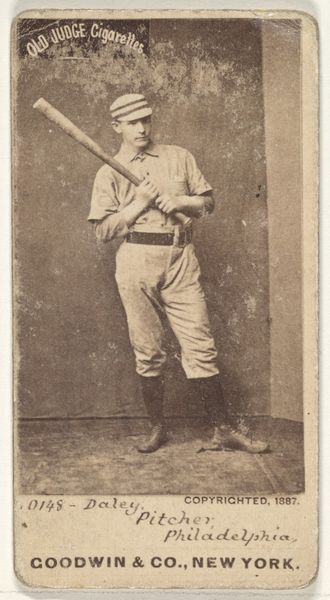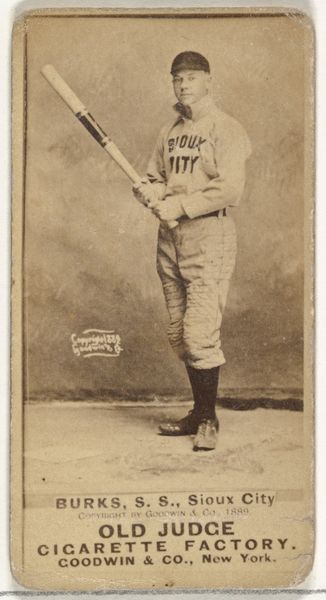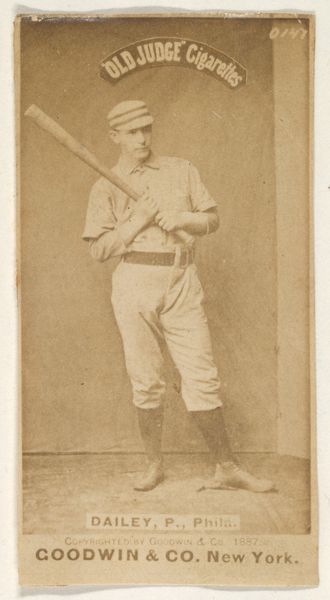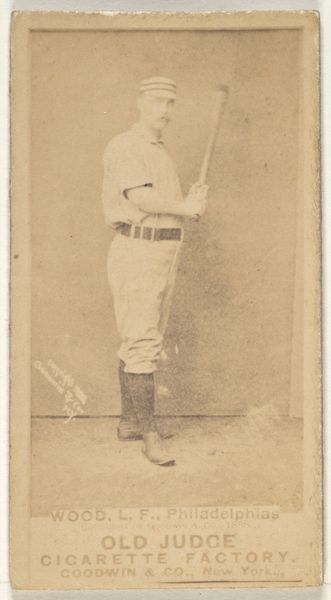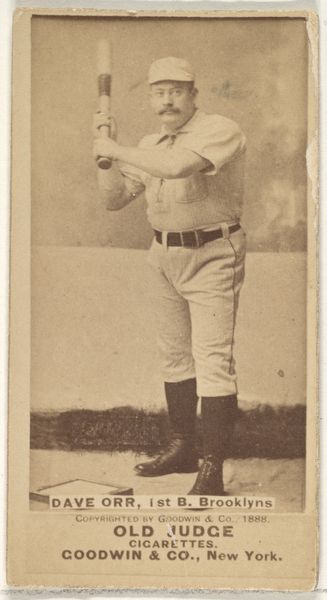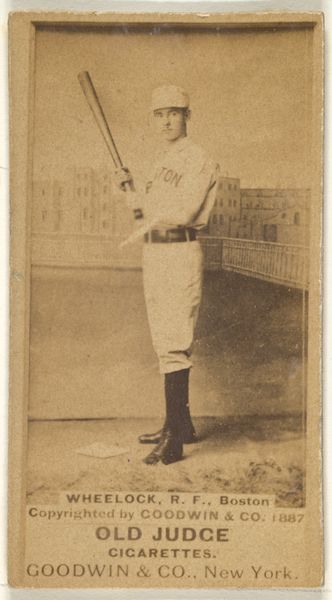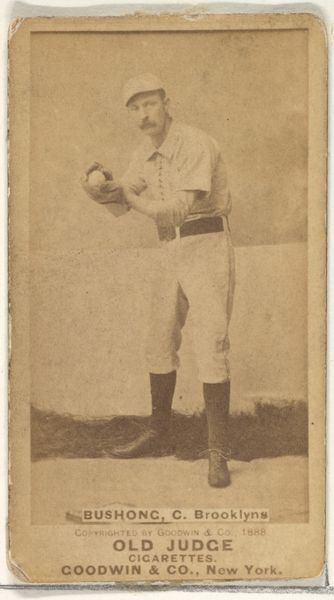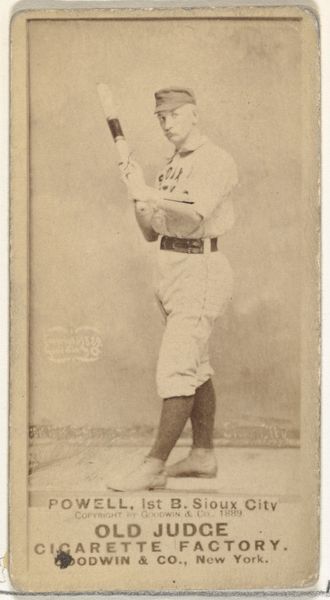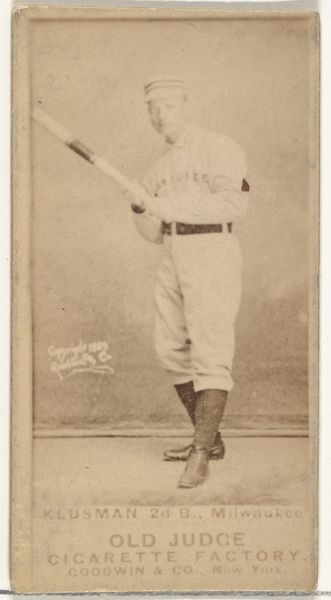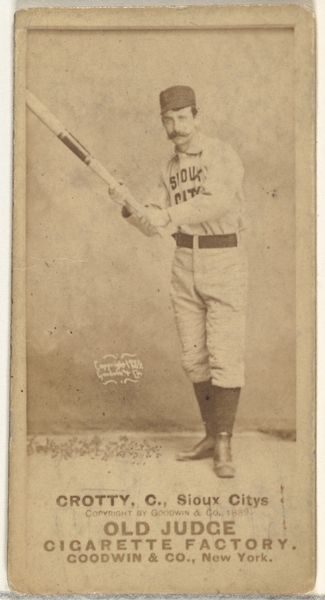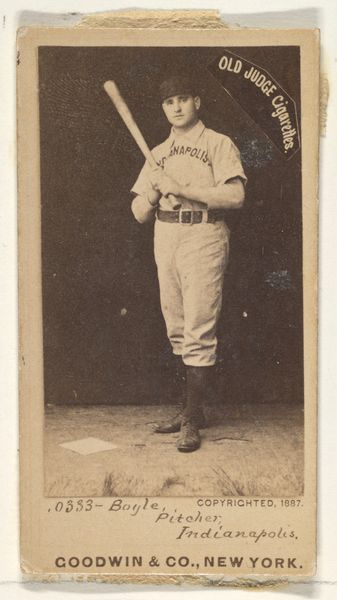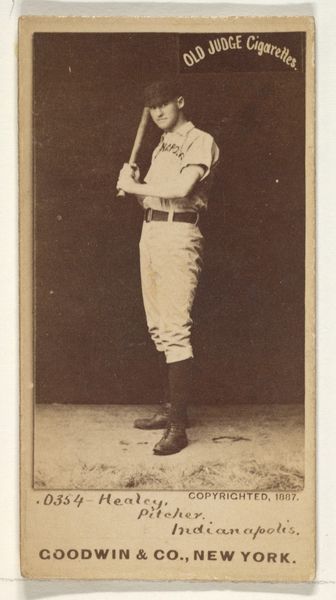
Sowders, Pitcher, Boston, from the Old Judge series (N172) for Old Judge Cigarettes 1887
0:00
0:00
drawing, print, c-print, paper, photography
#
portrait
#
drawing
# print
#
c-print
#
figuration
#
paper
#
photography
#
coloured pencil
Dimensions: sheet: 2 11/16 x 1 3/8 in. (6.9 x 3.5 cm)
Copyright: Public Domain
Curator: This is a baseball card from 1887, a piece entitled "Sowders, Pitcher, Boston," part of the Old Judge series for Old Judge Cigarettes, produced by Goodwin & Company. Editor: There’s something melancholic about this faded photograph. It speaks to a very different moment in baseball’s development. The image's composition, with Sowders centered, gives an impression of individual prominence against a suggestion of urban development. Curator: The fascinating thing is that these weren't considered art at the time, more like trade ephemera—but consider their circulation. They became incredibly popular, revealing much about the burgeoning celebrity culture around athletes, and the connection between sports, labor, and leisure. What message did these cards give at a time when leisure was considered a very privileged occupation? Editor: I see the industrial connection even more directly through the production process itself. The lithography, the paper, the labor in the cigarette factories and the printing shops… All of these elements speak to a rapidly industrializing America, relying on a massive underpaid workforce that relied on the distribution and collecting habits of their population for marketing. Curator: Precisely. And looking at Sowders, it prompts us to consider the complexities of race and representation in sport. Who was included, who was excluded, and how was athletic prowess racialized? The cigarette cards offered opportunities for visibility for certain men but simultaneously reinscribed boundaries related to whiteness and athleticism, which would soon after manifest as segregation in sport. Editor: You're right, these seemingly innocuous cards participated in defining social roles through visibility and exclusion. And thinking about the materiality again, it's important not only to focus on "high" art production. We need to understand how value is assigned and consider the broader material culture that shapes our understanding of society. This humble cardboard rectangle reveals that cultural meanings and social stratifications are embedded into every step in production and collection of these baseball cards. Curator: Absolutely. Looking beyond aesthetics, we reveal profound questions of power, identity, and the very mechanisms of representation embedded in everyday objects. Editor: Indeed, art and culture isn’t just in museums; it is in baseball cards, advertisements, and all other mundane materials in order to reveal the foundation our lives are made of.
Comments
No comments
Be the first to comment and join the conversation on the ultimate creative platform.
